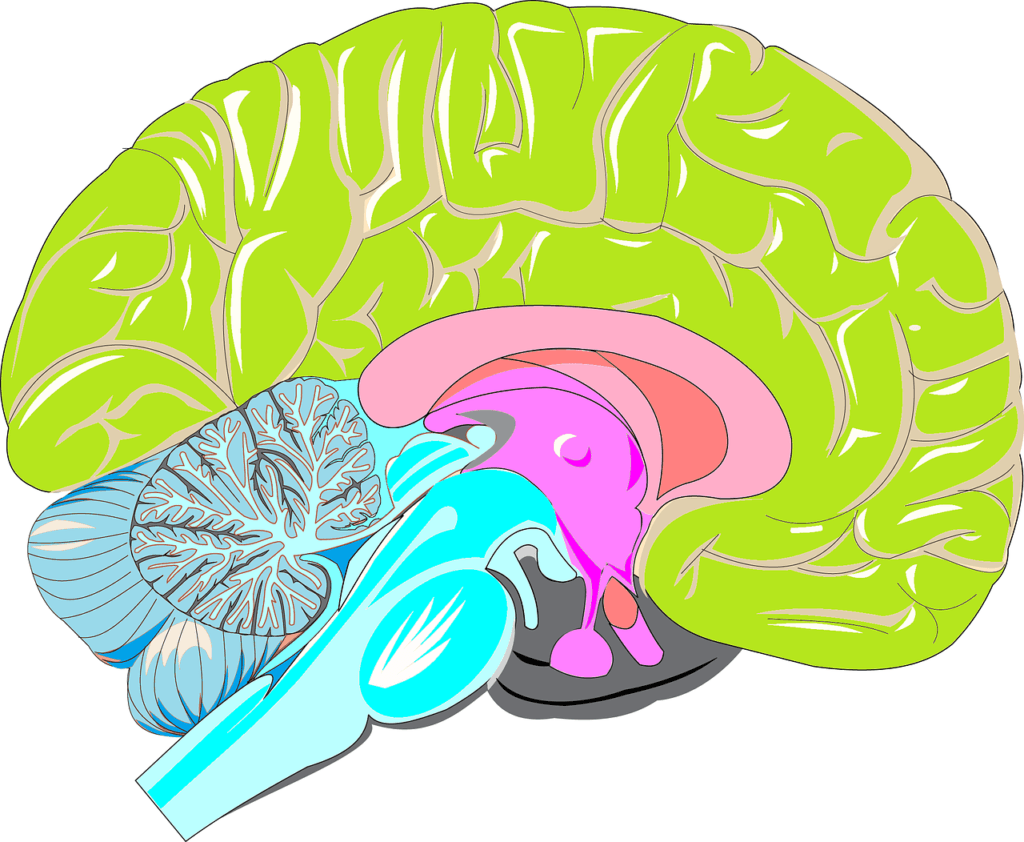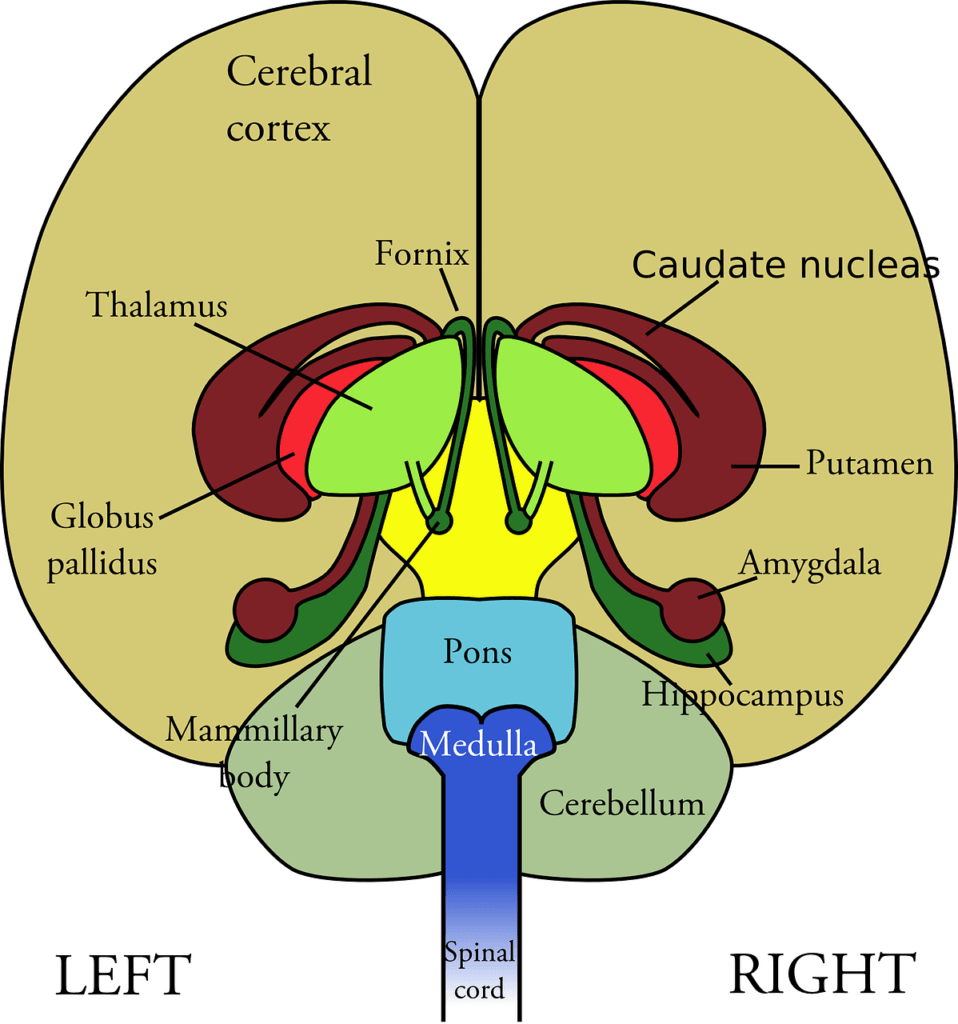Understanding our brain anatomy basics can be helpful in the world of work. Some people consider the brain to be comprised of three main parts: the hindbrain, the midbrain and the forebrain. Each part has a different role to play in overseeing how we think and feel, thus how we behave and work.
Summary by The World of Work Project
Brain Anatomy Basics
From a highly simplistic perspective the brain can be thought of as having three main parts. Some people say they are segregated by how old they are evolutionarily and the function they play, others say they all evolved at the same time.

The Hindbrain
The hindbrain (or “root brain”) includes the brain stem and is considered by some people to be the oldest part of our brains. It includes the Medulla Oblongata, Pons and the Cerebellum.
The hindbrain is connected directly to the spinal cord and governs vital, but primitive, life functions like breathing, digestion and circulation as well as receiving sensory input and managing muscle coordination. All vertebrates, including reptiles, have a “hind-brain”.
The Midbrain
The midbrain is located between the hindbrain and forebrain. It’s essentially a relay station passing information between the central nervous system and the forebrain.
The Forebrain
The forebrain is, according to some, the most recently evolved part of our brains. It comes in two parts. The lower part, the diencephalon, is also known as the limbic system and is primarily responsible for our emotions and our memories. The upper part of the forebrain, the telencephalon, includes the cerebrum and neo-cortex and is responsible for our higher brain functions such as thinking, planning and parts of speech.
Only a few other highly evolved animals such as primates and dolphins have similar forebrains to humans.

Learning More
The brain is a fascinating thing and hugely affects our working experiences. Oxytocin and Adrenaline, which contributes to our fight or flight response, might also be interesting to learn more about.
These factors all affect our emotions in the world of work. We don’t all have the same levels of emotions. Alexithymia is the inability to feel, process or understand emotions. Being aware of our emotions is sometimes known as metamood. Learning more about our brain can help increase our emotional intelligence.
You can listen to our introductory podcast on emotional intelligence below:
The World of Work Project View
As we’re sure you can tell from the simplicity of this post, we’re not experts in this field at all! Despite our lack of knowledge, we’re interested in brain anatomy basics.
While there is absolutely no need to understand neuro-science to be effective in most careers, a basic understanding of where our thoughts and emotions come from may help individuals improve their emotional intelligence, respond to and manage their emotions, empathize and work well with with others and respond well in difficult, emotional situations.
The key take away points regarding the anatomy of the brain are that we have two main areas that affect our thinking. The limbic part of our brain supports our emotional thought processes, while the neo-cortex supports our more rational, calculated and planned efforts at thinking.
In many instances we strive to use the more rational tools that we have, but this often isn’t easy as the more emotional side of our brain often has more power over how we think and act than we might like.
There is one last thing we’d like to say on this though, which is that our collective understanding of the brain continues to evolve rapidly. Things that we knew a few years ago, we now know to be untrue, and vice versa. And this holds not just for the human brain, but also for animal brains.
How We Help Organizations
We provide leadership development programmes and consulting services to clients around the world to help them become high performing organizations that are great places to work. We receive great feedback, build meaningful and lasting relationships and provide reduced cost services where price is a barrier.
Learning more about who we are and what we do it easy: To hear from us, please join our mailing list. To ask about how we can help you or your organization, please contact us. To explore topics we care about, listen to our podcast. To attend a free seminar, please check out our eventbrite page.
We’re also considering creating a community for people interested in improving the world of work. If you’d like to be part of it, please contact us.
Sources and Feedback
This post is based on general reading and there are no specific references for it.
We’re a small organization who know we make mistakes and want to improve them. Please contact us with any feedback you have on this post. We’ll usually reply within 72 hours.






